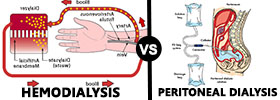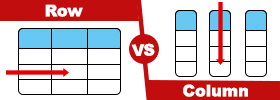Difference between Severity and Priority
Key Difference: The terms severity and priority are commonly used in relevance to software testing. The severity of a bug is based on how much it impacts the system. It is categorized on the basis of how much it impacts the functionality of the product. The priority of a bug, on the other hand, refers to how soon the bug must be fixed.

The terms severity and priority are commonly used in relevance to software testing. However, in order to understand the relevance of severity and priority on software testing, we must first understand the definition of the terms.
Severity is defined as the state or quality of being severe, which basically means harsh, stern, or rigor. Severity is the quality or state of being demanding or unyielding. Whereas, priority is the state or quality of being earlier in time, occurrence, etc. It is when something takes precedence over everything else. Similarly, severity refers to the seriousness of the bug, whereas priority refers to how fast the bug should be resolved.
The severity of a bug is based on how much it impacts the system. It is categorized on the basis of how much it impacts the functionality of the product. If the impact is high, i.e. it causes the system to crash completely then it has high severity, however, if it does not have a significant impact on the system, then the severity will be low.
 The priority of a bug, on the other hand, refers to how soon the bug must be fixed. It gives direction on weather the bug should be fixed immediately, or the bug wait until the next release of the system.
The priority of a bug, on the other hand, refers to how soon the bug must be fixed. It gives direction on weather the bug should be fixed immediately, or the bug wait until the next release of the system.
A bug can be categorized as High Priority and High Severity, or it can be Low Priority and Low Severity. A bug can also be High Priority but Low Severity in case if it does not impact the functionality of the system, but should be fixed immediately, such as a mistake in the logo. A bug can also be Low Priority but High Severity in case if the bug has a high impact on the functionality on the system, but the chances of the bug occurring are low, hence the fix can wait until later.
Comparison between Severity and Priority:
|
|
Severity |
Priority |
|
Description |
The severity of a bug is based on how much it impacts the system. |
The priority of a bug is based on how soon it must be fixed. |
|
Types |
|
|
|
Implication |
Associated with functionality issues |
Associated with schedule to resolve |
|
Refers to |
Severity refers to the seriousness of the bug on the functionality of the product. Higher effect on the functionality will lead to assignment of higher severity to the bug. |
Priority refers to how soon the bug should be fixed. |
|
Associated with |
Associated with functionality. Reflects a flaw in the system. |
Associated with benchmark quality or adherence to standard. It reflects harshness of a quality expectation. |
|
Related to |
Is related to technical aspect of the product. It reflects on how bad the bug is for the system. |
Is largely related to Business or Marketing aspect. It is a pointer towards the importance of the bug. |
|
Decision to fix |
The Quality Assurance Engineer decides the severity level. It is decided as per the risk assessment of the customer. |
Priority to fix a bug is decided in consultation with the client. |
|
Fixes based on |
Product fixes are based on Bug Severity. |
Product fixes are based on 'Project Priorities. |
|
Examples |
System crashes that occur with an obscure command is High Severity, as has a high impact on the functionality of the system. However, it is low priority as the chance on anyone using that command is low. Hence, it can be fixed in the next system update. |
A spelling mistake in the company’s logo on the website is a High Priority issue as it depicts the company. However, it is a Low Severity issue as it does not impact the functionality of the website. Hence, it must be fixed as soon as possible. |
Image Courtesy: measuringu.com, caesie.org









Add new comment